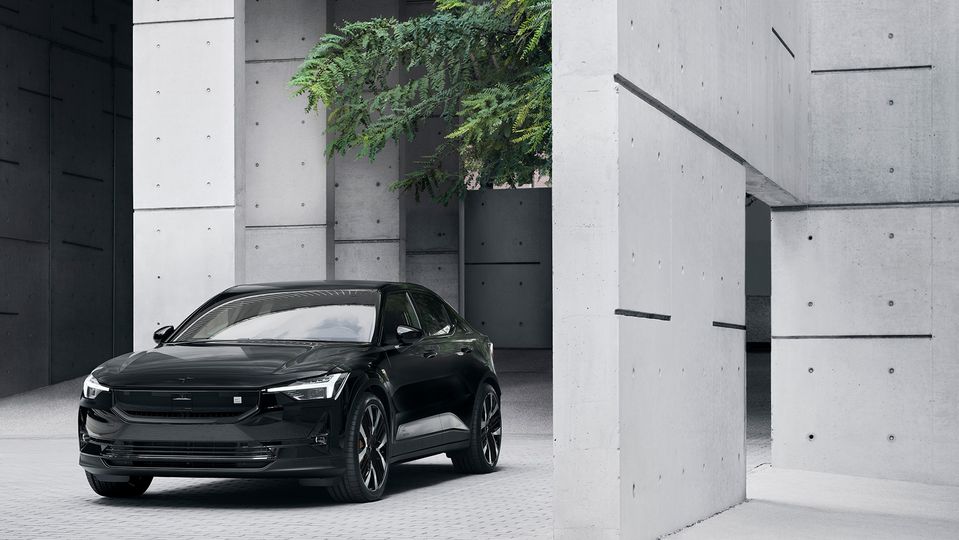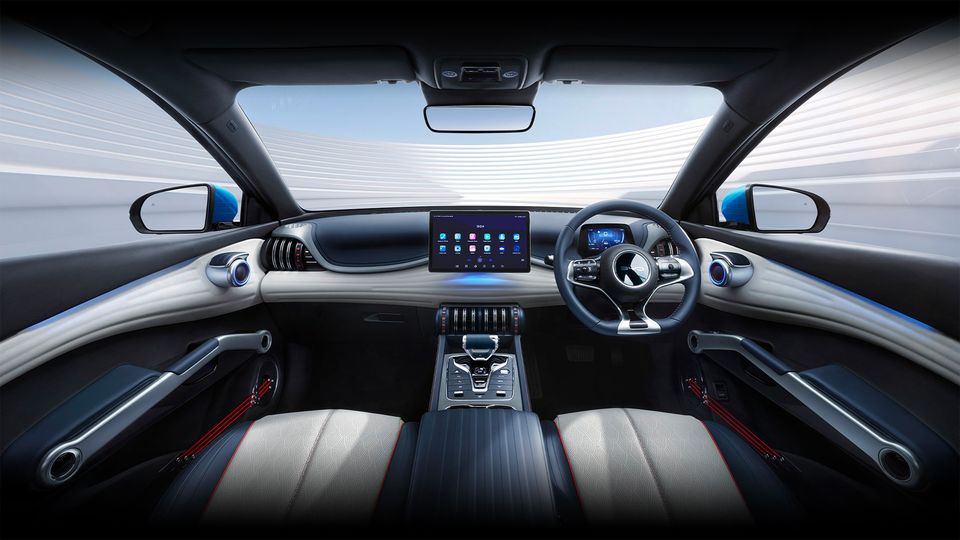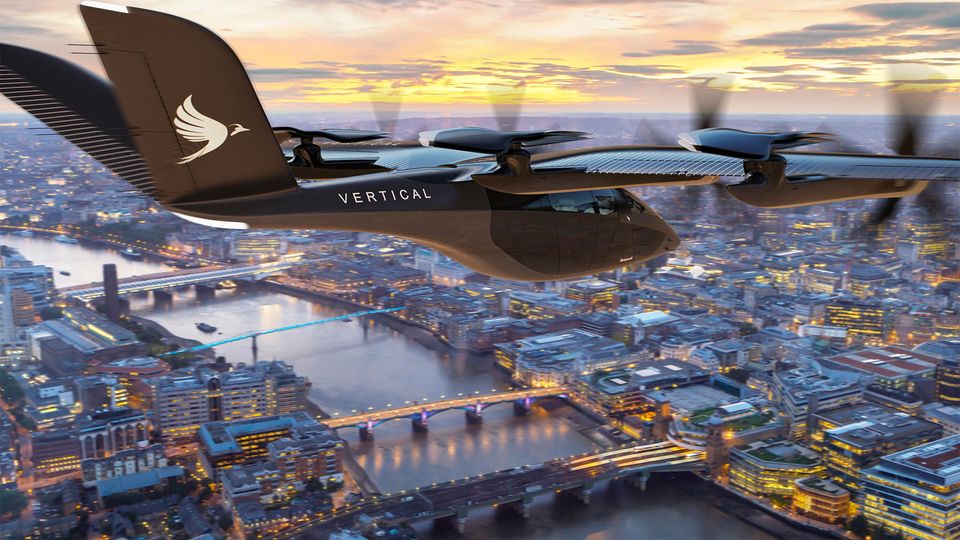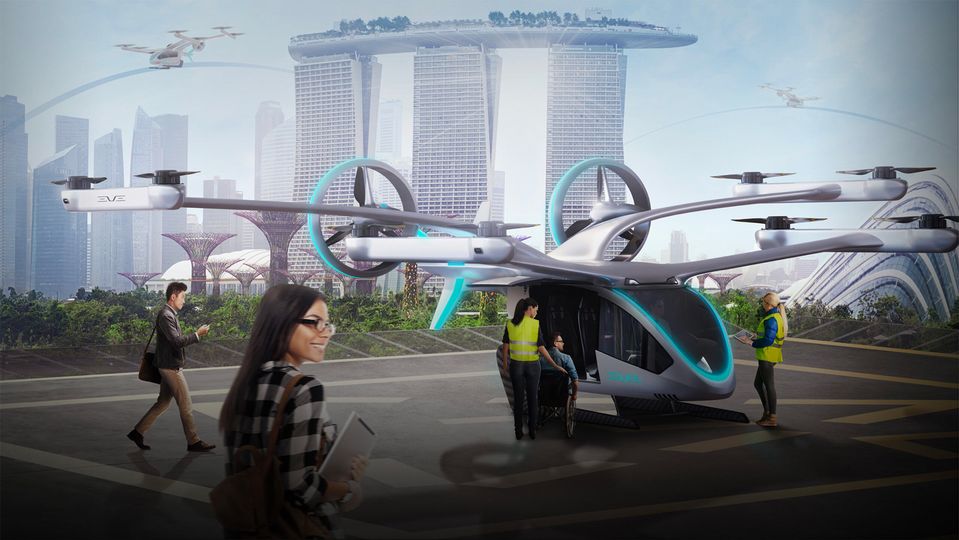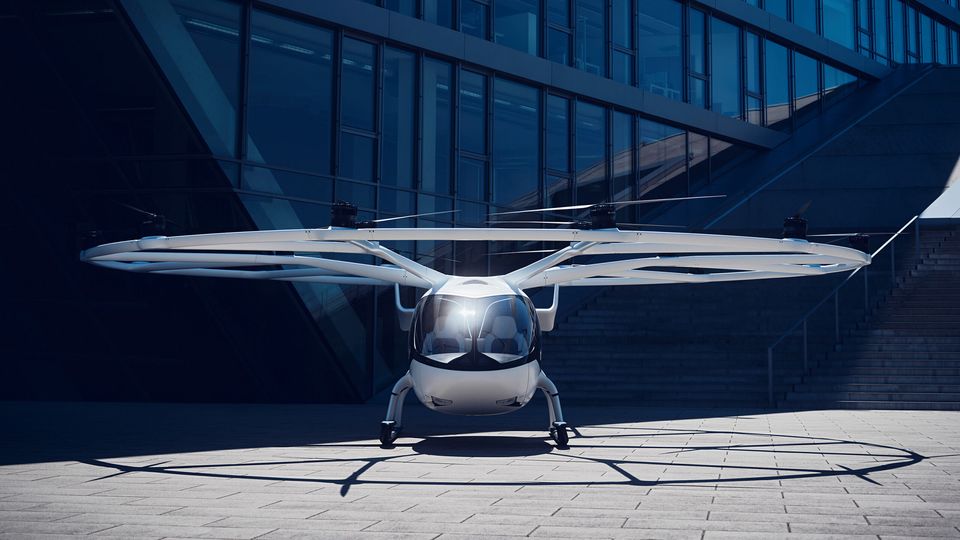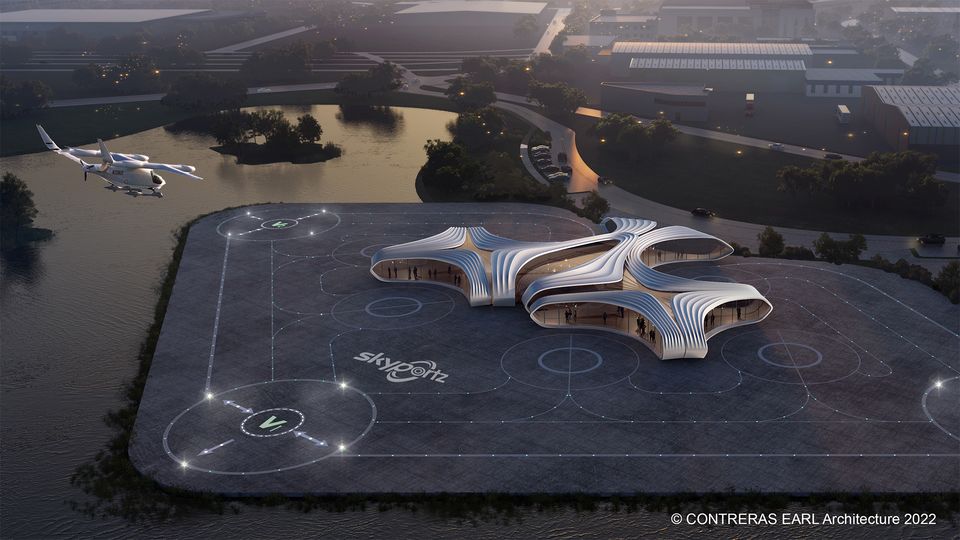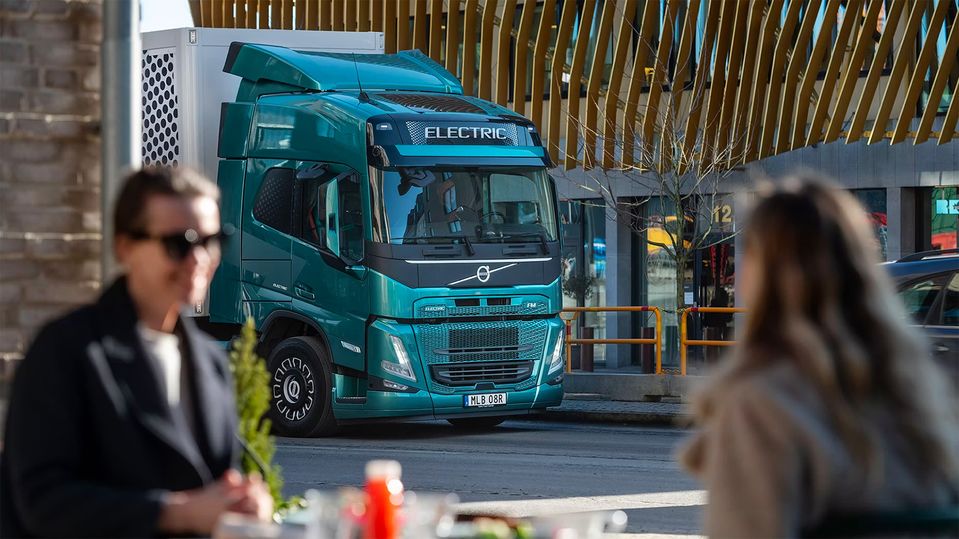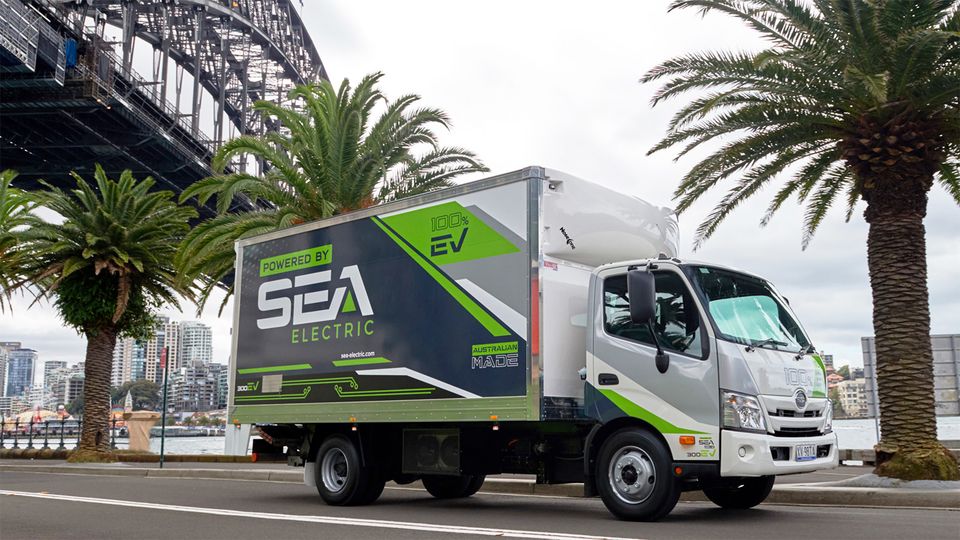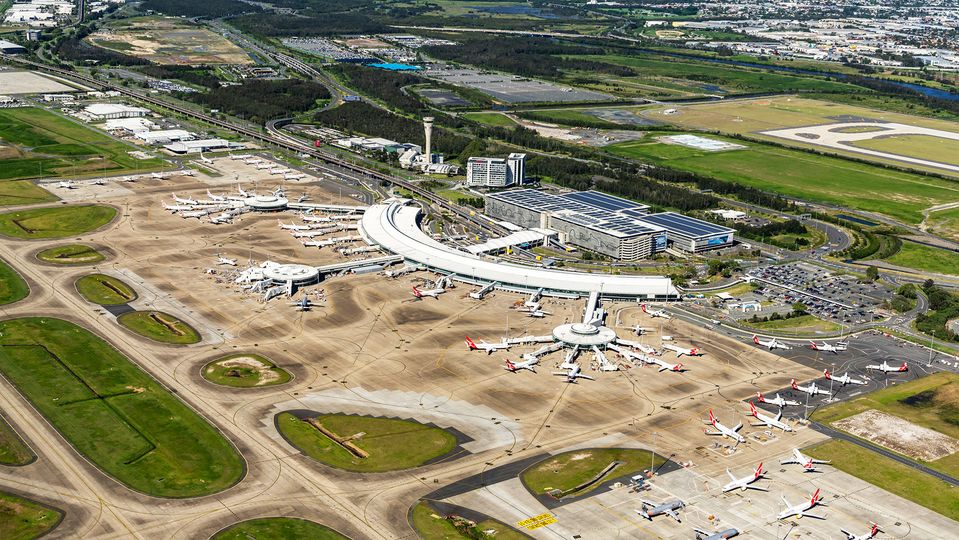Experts reveal the future of Australian travel mobility
From flying taxis above Melbourne to fully-electric trucks delivering 24/7, the future is closer than you think.
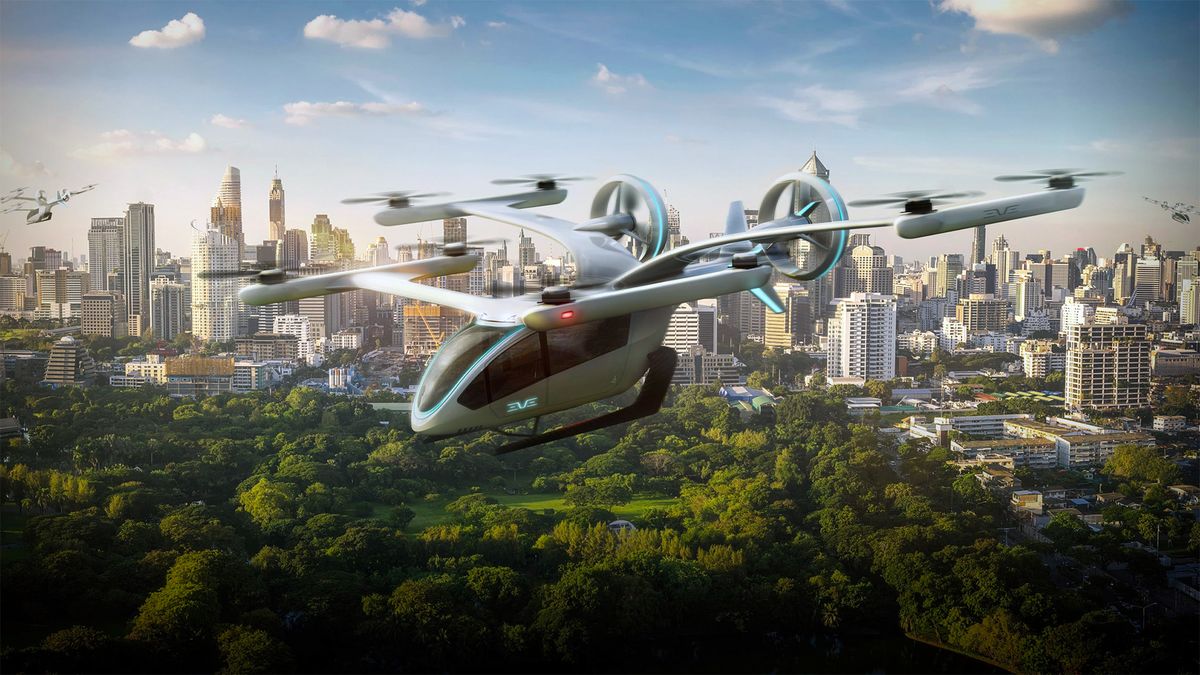
Back in 1962, The Jetsons was set in a fictional world where delivery drones and self-flying cars were fixtures of daily life. While that predicted reality hasn’t arrived yet, it may not be too far off, with mobility at the cusp of a huge transformation – on the ground and in the sky.
As countries set bold targets for phasing out fossil fuels, an electrifying vision of the future is taking shape, and it has the potential to dramatically change how we live, work and travel.
Rather than happening at some undetermined point down the road, groundwork is being laid right now, with many of the world’s top automotive and aerospace companies switching up design and manufacturing in favour of cleaner, greener technologies.
Among them are Mercedes-Benz, Volvo Group and Ford, which have committed to being fossil fuel free by 2040, and Eve Air Mobility, a subsidiary of Embraer, which is aiming to have its first electric vertical take off and landing aircraft (eVTOL) in the air as soon as next year.
But where is Australia at in its electric overhaul and what changes are we likely to see in the near future? These experts reveal all.
Electric vehicles gaining momentum
Standing at the petrol bowser and watching numbers tick by as you wait for the ‘click’ to let you know the tank’s full has been a driver ritual for decades. With EVs now accounting for 3.5% of all new vehicle sales in Australia, that experience is slowly on the way out.
While the country is certainly lagging behind other global markets in EV adoption, Electric Vehicle Council CEO Behyad Jafari says it’s not for lack of interest from consumers.
“Availability is by far the biggest issue for EV uptake in Australia,” Jafari explains. “Some 3.5% of new car sales are electric in Australia, compared to 20% in markets like the UK. But every EV in Australia is sold out, often within minutes of being available for sale.”
However, though it may take time to flow through, Jafari believes the solution is a simple one.
“Australia and Russia are the only two developed countries without vehicle CO2 regulations and as a result, carmakers are prioritising other markets to send their best and newest tech.”
By simply establishing a regulation, we could see more products destined for our shores. Encouragingly, Jafari says the federal government has prioritised this and “so long as we get it right, we should start to see our market catch up with our peers globally.”
In the meantime, Australian drivers eager to get their hands on an EV can hop behind the wheel of one through hire companies like Hertz and Sixt, with the former’s fleet including the Polestar 2 from Volvo, and the latter Tesla Model 3 and BMW iX3 luxury SUV.
Sixt has also just signed a deal with Chinese manufacturer BYD to bring more than 500 Atto 3 down under from mid-2023. The rollout is expected to be complete by February 2024.
To date, there are more than 3600 publicly-available EV chargers strategically placed in 2100 locations nationwide, with more coming every week.
Flying taxis almost cleared for take-off
Headlines promoting the latest eye-popping eVTOL concepts have been a common sight in recent years, with these battery-powered vehicles – like sci-fi helicopters dreamed up by Hollywood – often hailed as the future of short range transportation.
More than a mere novelty, eVTOL have the potential to deliver pretty significant time savings, with trips currently taking an hour or more by road potentially slashed to just minutes.
Key players in the eVTOL race include British manufacturer Vertical Aerospace, Germany-based Volocopter, and Eve Air Mobility, headquartered in Florida but with ties to Embraer in Brazil. Joby Aviation from California is also one of the frontrunners.
“At Eve, we say that we are re-imagining mobility,” explains Andre Stein, Co-CEO of Eve Air Mobility, where current global orders for its 100% electric eVTOL now exceed 3000.
“Sustainable aviation will transform urban mobility… our journeys to work, school and play will no longer be determined solely by traffic conditions and transit timetables – we will have the option of flying to our destination,” Stein adds.
While initial vehicles will be piloted, autonomous variations are also in the works, with Stein noting that once approved, self-flying models could help make flights even more affordable.
Europe’s first Vertiport, where eVTOL will take off and land, is well under construction at Cergy-Pontoise northwest of Paris, albeit a temporary one. There are plans to have two aerial routes up and running for the Paris 2024 Olympics.
Although as yet unannounced, Volocopter’s two-seater flagship, the Volocity air taxi, is widely speculated to be the aerial vehicle featured on the routes.
In Australia, Melbourne-based helicopter service Microflite has struck a deal with Eve for up to 40 eVTOLs, with a take-off goal of 2026, while Aviair and HeliSpirit – which run scenic tours and charters in Western Australia – have also placed orders with Eve for around 50.
Caribbean Park, an office precinct in Melbourne’s east, has been identified as a possible location for the city’s first vertiport. Skyportz, a company working to lay the infrastructure groundwork needed for aerial taxis, unveiled its concept for the site last year.
While just a concept and not approved for construction, the visually-arresting design offers a glimpse of what might be possible in future, be it mini airports or privately owned ‘vertistops’.
“Electric air taxis will be a new era in aviation where clean, green and quiet small aircraft can take people to places they want to go,” says Skyportz CEO Clem Newton-Brown, while adding that vertiports are the missing piece of the puzzle needed to reach their full potential.
“Existing helipads and airports will be the easy first-use vertiports, but for this industry to actually be a revolution we will need a matrix of vertiports that can deliver safe, affordable and fast air services to places people want to go.”
Logistics already a long way down the road
It’s long been said ‘without trucks, Australia stops’. With that in mind, the trucking industry is already looking at new ways to safeguard its own future. Electrifying fleets is the logical next step – and the potential benefits go well beyond emissions alone.
SEA Electric and Volvo Trucks are two of the pioneers in the electro-mobility space down under. The former’s manufactured in Melbourne, while Volvo has committed to building fully-electric trucks at its Wacol facility in Brisbane by 2025.
“Depending on where and how you charge, electromobility can be cheaper than traditional fossil fuel transport, the reduction of serviceable moving parts also means that servicing is much less frequent and often cheaper,” explains Volvo’s e-mobility solutions manager Tim Camilleri.
There’s also an improvement in air quality in urban settings, as well as reduced traffic noise.
Diesel trucks are currently subject to curfews limiting noise pollution in residential areas at night. With electric trucks, deliveries could potentially be made 24 hours a day, or even see trucks deliver after dark, with roads then freed up during the day.
“It’s an exciting time to be working in this space, there are just so many possibilities.”
Making aviation more sustainable
Back to the skies, one of the biggest talking points in aviation right now is sustainable aviation fuel (SAF). Why? Because, with similar properties to conventional jet fuel but a smaller carbon footprint, the biofuel has the power to help the industry transition to a fossil-free future.
Airlines from Qantas to Lufthansa and Emirates are all investing heavily in the development of SAF, which is often derived from sources such as used cooking oil and agricultural waste.
Airports too are making the shift towards the use of sustainable fuel, including both Brisbane and Sydney Airport, which have set ambitious net zero targets by 2025 and 2030 respectively. SAF is one element helping them to achieve that.
“It doesn’t grab the headlines as easily as vertical taxis, but it is vitally important for the aviation sector to put itself on a path to sustainability and we are eager to play a leading role,” reveals Raechel Paris, Executive General Manager of Sustainability at Brisbane Airport Corporation.
“Our customers, our shareholders, our staff and most importantly, our planet requires us to do things differently. It is a journey Brisbane Airport has pursued for more than a decade.”
Beyond SAF, the Queensland hub has entered into a six-year agreement to secure energy from solar and wind projects, which will power everything from runway lights through to EV charging facilities for its 100% electric bus fleet, all-electric aircraft refueller and cars.
“Travellers want to go on holiday and have as light a touch on the environment as possible. The sooner as an airport and aviation community we can deliver on that, the better it will be for the planet.”
